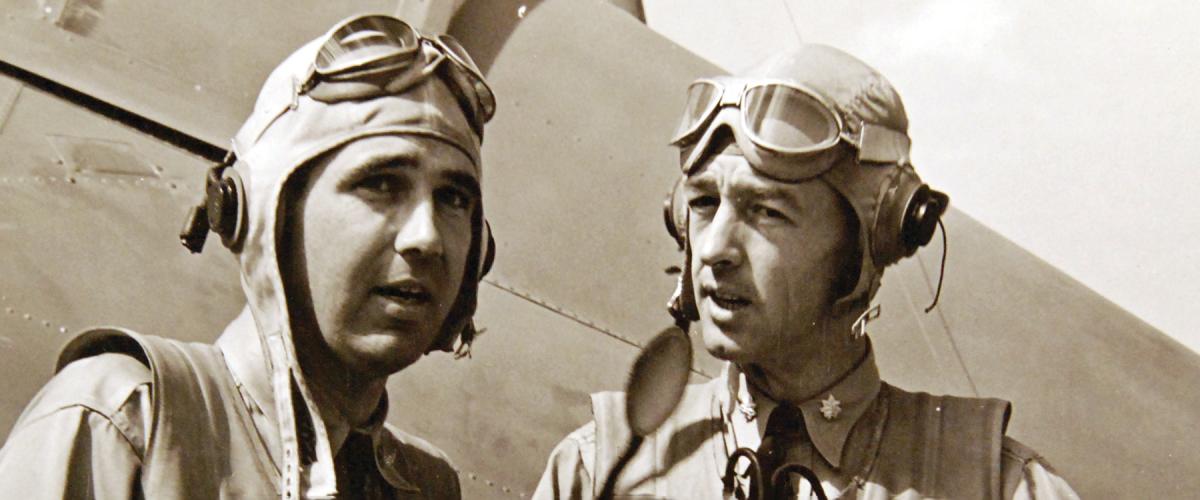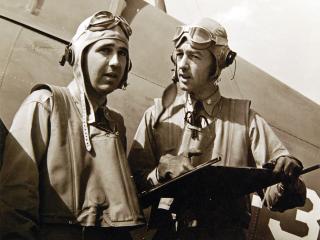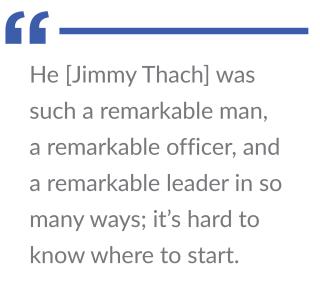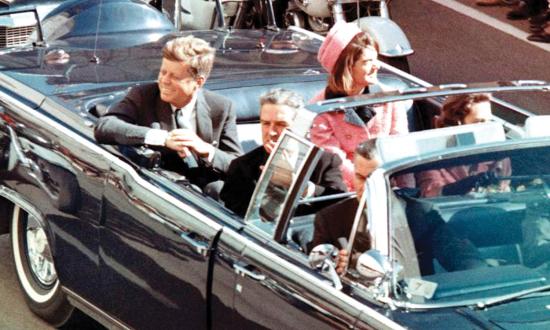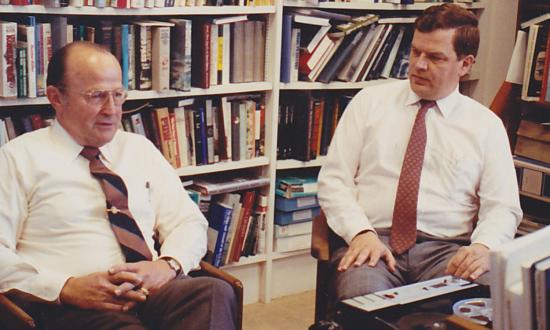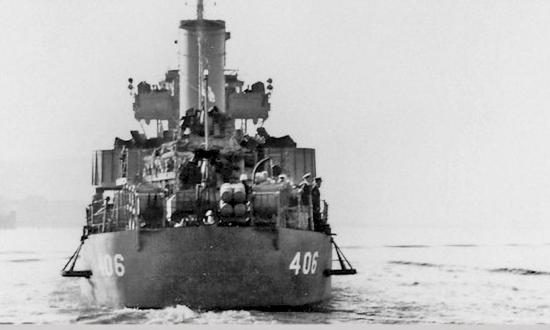When U.S. prisoners of war were released from captivity in 1973, Admiral Gayler, as Commander-in-Chief, Pacific, welcomed them home from Vietnam. Many years earlier, as a lieutenant (junior grade) just out of flight training, he had reported to Fighting Squadron Three (VF-3), assigned to the aircraft carrier USS Saratoga (CV-3), in November 1940. VF-3’s skipper was Lieutenant Commander John S. “Jimmy” Thach, perhaps the U.S. Navy’s top fighter tactician of the era. Following is an edited excerpt from interviews with Gayler conducted by the Naval Institute’s Paul Stillwell on 4 November and 1 December 1983.
When I joined Fighting Three, it was housed in two tiny little hangars down by the waterfront at North Island, near San Diego. The squadron was just transitioning from Grumman F3Fs, biplanes, to F2A Brewsters, which were monoplanes. The Brewster was thought to be a really hot machine, but there was debate about whether it was possible to fly monoplanes off a carrier because of their purportedly adverse stall characteristics.
Though I didn’t have any desire for a specific fighter squadron, I was pleased to go to Fighting Three, particularly because I had heard of Jimmy Thach’s reputation. He was such a remarkable man, a remarkable officer, and a remarkable leader in so many ways; it’s hard to know where to start. He was farsighted beyond most people, a really thoughtful and analytical guy, and yet the sort of fellow who could be almost a father figure, even to some hardened old man of the world with five years’ fleet experience, as I was.
He led by leading. He was the first guy off the deck. He led by precept. He clearly understood what he was doing, and yet he invited participation, invited ideas. He gave encouragement at the right time, occasionally the stick as well as the carrot. His method was both gentle and effective. He would reward by handing out responsibility, and he would use a stick by withdrawing it gently until you learned the business better. He was very helpful in bringing me along.
We had a couple of guys in the squadron who were quite experienced pilots, Ensign Rolla Lemmon and Ensign John Lackey. They were old-timers, ex-aviation cadets who had been flying a long time. Even though I was senior because of shipboard duty before flight training, I flew on Rolla’s wing most of the time I was learning.
Rolla had an interesting habit. Before we really got into the Thach tactics, we still flew in three-plane sections. When we were operating out of San Diego, Rolla would approach screaming over Point Loma, coming in to land. Then he would roll over on his back at 800 feet. Of course, we would dutifully roll over on our backs with him. We would fly around the field on our backs, then roll out and land. I got on him once, and I said, “Rolla, what the hell are you doing?”
He said, “I dropped my pencil on the bottom of the cockpit.” I knew he was lying like a rug. What he was really doing was hazing me a little bit, as some of the old-timers did.
Another newcomer to the squadron was Lieutenant (j.g.) Butch O’Hare, also recently out of flight training. He came aboard a few months before I did. One of the tests for new pilots was an exercise known as the “humiliation squad.” A new man would go up and be given a position advantage over the more experienced pilots. He would start out on their tails, but the better pilots soon turned the tables and got on his tail, putting him in a vulnerable position. It was a way to show him not to be cocky.
The leaders subjected O’Hare to the test, but they couldn’t outmaneuver him. He was fully capable as soon as he arrived. He was a natural. He was not an athlete, by the way. He was a little tubby, but he was a phenomenal shot. I didn’t know Butch awfully well. I don’t think anybody knew him really well. He was kind of a loner. He was not aloof but liked his own company.
By 20 February 1942, the squadron was flying F4F Wildcats from the Lexington (CV‑2), because the damaged Saratoga was out of action. That day Butch and I went out against a group of Japanese bombers that endangered our ship. Somewhat foolishly I led my wingman too high and fired almost directly down. I realized later that it took too long to climb into position. I set one guy on fire, and the other started to burn. What O’Hare did was just barge in there and shoot down five of them. He became the Navy’s first fighter ace of the war and received the Medal of Honor.



